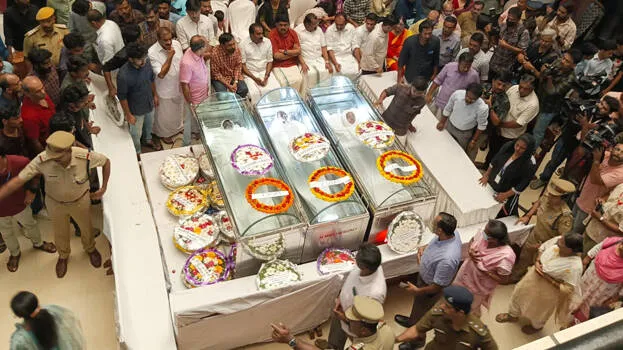

Kerala has not been spared from the shock of the tragic death of four people including three engineering students in the stampede during the Techfest organized by the School of Engineering at CUSAT. The whole of Kerala shares the grief of the loss of those young men and women who dreamed of a better life. CUSAT Syndicate, Higher Education Department and Thrikkakara Police are conducting separate investigations into the cause of the accident. The police have announced that they will issue special guidelines for crowd control. All of this is good. We should also have a rethinking of what precautions can be taken to prevent such tragedies from repeating, even if the lamentations and interpretations end.
There were more people than expected outside the gate of the open-air auditorium where the concert was to take place. There was a good chance of rain. The auditorium was on a downward slope from the road level. When the gate suddenly opened, the people who were waiting tried to rush through the narrow cement steps, which caused the accident. Those who were behind the ones who fell on the stairs fell on the ones who fell down first. Others stepped over them. The post-mortem report of the four people who lost their lives said that the cause of death was asphyxiation due to rush and kicking. Two things are important in the case of unexpected disasters that happen in auditoriums and places other than open spaces: The first thing is the construction of the building where the accident occurred. Second, congestion control arrangements.
In the CUSAT disaster, it is clear that there was a serious failure in both these respects. Engineering experts have pointed out that it is unscientific and illegal to build stairs right from the gate to the low-lying auditorium. It is not known whether any special arrangements were made to control the crowd at the event, which was attended by thousands of students and outside spectators. It can only be called an invited disaster. Four lives were lost due to carelessness. The parents, relatives and friends of Sarah Thomas, Ann Rifta, Athul Thampi and Albin Joseph are the ones who had an irreplaceable loss.
It is the responsibility of the institutions and the government to ensure the safety of people including students during such fests held in colleges and higher education institutions. Unfortunately, such responsibilities often go unfulfilled. When B Sandhya was the head of Fire and Rescue Services, it was decided to implement a project called the Student Civil Defense Cadet Project (SCDC) in 2021 in association with the college education department to avoid such accidents and perform emergency life-saving missions in emergency situations. A list of colleges to be included in the first phase of this scheme which includes awareness and training programmes was also been published. This project, which received the approval of the Union Home Ministry, did not take off due to various reasons.
Perhaps, if such a scheme could have been implemented in all the campuses in Kerala, the CUSAT disaster could have been avoided. In the wake of the CUSAT tragedy, ADGP MR Ajith Kumar said yesterday that guidelines for crowd control that meet international standards will be issued soon, and only those programs that comply with them will be given permission in the future. Whatever norms are announced for building construction, organization of events and crowd control, it is important that such provisions are strictly implemented without delay.